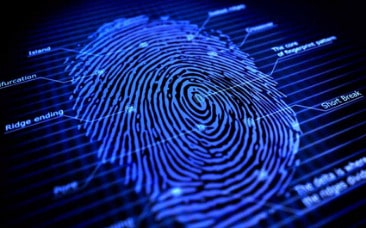A new system from the Police Digital Service is set to speed up the submission of fingerprints gathered at crime scenes allowing cloud-based biometric matches in hours not days against a database of 8.4 million records. The system should be ready by the end of December and the first forces, under the East Midlands Special Operations Unit, are expected to be using it by March 2023.
By allowing real-time submission of crime scene images, the service is hoped to quickly prevent repeat crimes, improve data compliance and even allow forensics staff to spend longer in the field rather than having to return to the lab, according to the Police Digital Service (PDS).
A series of technical integrations is allowing the improvement to policing. The Transforming Forensics (TF) program is now hosted by the PDS Xchange, a secure, national cloud-based platform running on Amazon Web Services (AWS). The Xchange will provide a growing range of digital tools for policing.
The development of the PDS Xchange is a result of a partnership between the PDS, Home Office Biometrics (HOB) and police subject matter experts.
Home Office Biometrics provided the police’s national automated fingerprint system, IDENT1, which was integrated in the Xchange back in April 2022. The more than 8.4 million fingerprint data records are now accessible through the cloud.
Fingerprint matching will not just be faster, but more accurate. The police hope that rapid matching from crime scene fingerprints will let officers find suspects and prevent repeat “serious acquisitive crime” (SAC), stating that crimes such as burglaries and vehicle-related theft make up three-quarters of around 2 million neighborhood crimes.
The PDS Xchange facility will allow further integration, image consolidation and a higher level of compliance, according to the release, which “enables image retention/removal in a cost-effective way.”
The entirely digital approach right from the crime scene removes the need for paper records and means forensics staff can continue to work in the field, remotely submitting fingerprint images.
“This game changing moment now swings the focus to prioritise the integration between HOB and TF, a crucial requirement for delivering the ‘holy grail’ of fingerprint identification and maximise investigative outcomes,” comments Andrew Price, director of corporate, forensic and technical services at the East Midlands Special Operations Unit, the first force to start using the service next year.
In a separate systems overhaul, Home Office Biometrics is also merging the central and bureau platforms of IDENT1 and the country’s other biometrics system, the Immigration and Asylum biometrics system (IABS). Leidos UK is three years into a 10-year, US$124 million contract to merge the systems and transfer them to the cloud.
The Home Office also signed a $9.2 million deal with IBM in 2020 to develop a “biometric mega-database” that will prevent crime.
Article: UK police about to accelerate digital fingerprint matching with hopes to prevent crime
